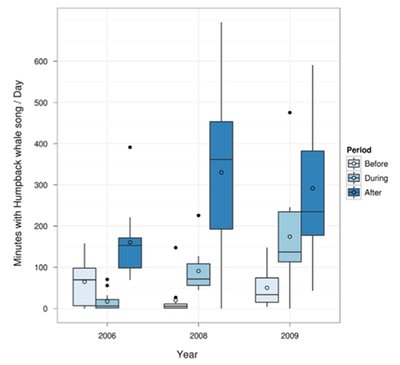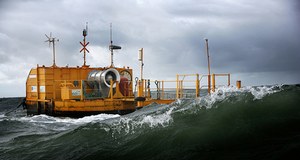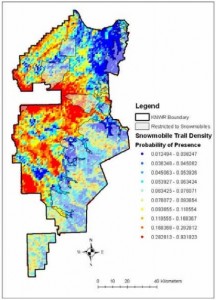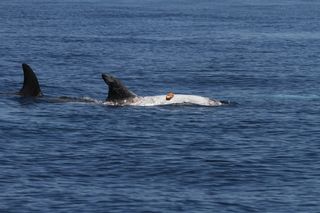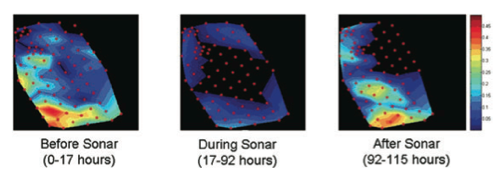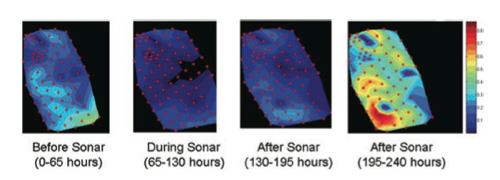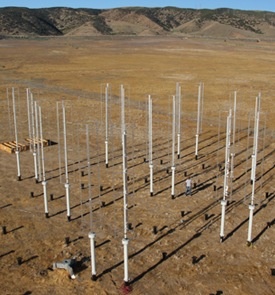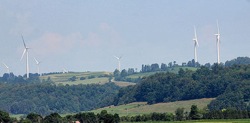If AEI were a mass media outlet, publishing this on New Year’s Eve would be considered an attempt to “bury” the story on a weekend when few people are following the news. But since our readership works on a longer time scale and are likely to find their way here over the next couple of weeks, I hope you’ll instead consider this a New Year present! It’s taken many (many…) hours of work, and I hope it helps all those working on wind farm noise issues – including local and state regulators, environmental consultants, wind developers, and community groups – to make sense of the insanely confusing world of low-frequency noise and infrasound. Here’s to a constructive 2012 as we continue to work toward siting policies that protect residents from unwanted changes to their sense of place while encouraging responsible and widespread growth of wind energy.
Download this extended post as a 22-page pdf file
As regular readers will know, AEI’s wind farm coverage has focused primarily on the ways that nearby neighbors respond to the audible noise from wind turbines, with far less emphasis on infrasound. However, given the ongoing public dialogue about the contribution of infrasound and low-frequency sound to the annoyance, sleep disruption, or health effects reported by some wind farm neighbors, I do like to keep abreast of research into the lower end of the sound spectrum. In this post, I’ll be summarizing several papers that have appeared in journals and conference proceedings over the past several months. This will be a much longer post than normal, but I encourage you to take the time to read through it, and to download the source papers for further study. What you’ll find here is a close reading of work from both mainstream and more cautionary acousticians, which I believe will help you to understand the subtleties of our current state of understanding in a new and clearer way.
I think it’s fair to say that the bottom line continues to be roughly the same as it’s been: wind turbines clearly produce much of their sound energy at lower frequencies, including the low end of the audible spectrum (20-250Hz) and the infrasonic range (below 20Hz, which is generally below the range humans tend to hear, simply because it has to be very loud to be perceptible). Conventional wisdom continues to be that the infrasound in wind turbine noise is well below human perceptual limits, even of the more sensitive fringe of the population. This summary doesn’t directly challenge that idea, though as you’ll see, there are some indications that we may have been a bit too quick to entirely rule out any perception of infrasound produced by wind turbines. Still, I hasten to stress that any possible connection between physically perceptible infrasound and health effects remains beyond the scope of most of these papers (with a couple of exceptions).
More importantly, though, it’s increasingly being recognized that low-frequency audible sound could very well be a key factor in widespread annoyance about wind farm noise. It’s important to not conflate infrasound and low-frequency sound; while the former is (always or mostly) imperceptible, the latter is clearly very audible in many situations, and indeed, is the dominant sound component of wind farm noise at moderate and larger distances. It’s quite likely that much of the annoyance people report could be triggered by very low frequency, moderately audible noise, which can be more ear-catching (or perhaps even cause physiological reactions) when it contains one or more dominant tones or fluctuates rapidly. Further, increasing evidence confirms neighbors’ reports that moderate but extremely bothersome low frequency noise can be more perceptible inside their homes than outside. These elements are part of the reason that several of the papers here from relatively mainstream perspectives (and which consider infrasound a non- or minimal issue) recommend lower noise limits than the 45-50dB standard commonly used in the US; you’ll see in these papers that 40dBA is becoming a common recommendation. Most of the more cautionary acousticians tend to recommend 30-35dB; it’s striking to me that the gap between these two perspectives has narrowed considerably in the last year or so.
Among the highlights of the recent research is Møller and Pedersen’s finding that larger turbines produce more low-frequency sound (especially audible low-frequency), and that in many atmospheric conditions, sound levels will remain annoyingly high for much farther than often assumed by more idealized sound modeling. Also of note, Bray and James’ field measurements of wind turbine sound, using equipment designed to capture very short time segments, reveals a remarkable variability and surprisingly high peak sound levels in the low-frequency and infrasonic sound, to a degree that raises questions about our tendency to rely on longer-time-period averages that indicate infrasound is always well below perceptual limits. As we look more closely into low-frequency and infrasound data, both the mainstream papers and the more cautionary acousticians’ work suggest that these questions are far from settled.
(I should clarify that my use of the word “mainstream” is meant to simply mean studies by folks working with techniques and perspectives on bothersome noise levels that have been standard in noise control assessment for many community noise sources. And conversely, the use of the term “cautionary acousticians” does not imply they are less qualified or biased in any way. Indeed, most of them have decades of noise control experience and have been drawn to the study of wind farm noise only because of the unexpectedly robust complaints that have arisen, and are professionally interested in trying to ascertain the reasons, either by using innovative measurement techniques or closely assessing annoyance patterns. They may be more “cautionary” in their recommended noise limits simply because they’ve looked more closely at specific problems, rather than keeping their distance and approaching the issue through standard noise modeling and analysis techniques.)
Some of the papers I’m summarizing here address aspects of annoyance and sound characteristics of wind farm noise that are not limited to low frequency and infrasound issues (especially including acknowledgement of the extreme variability of the overall sound levels); these papers provide important perspectives that may help us to understand why wind farms are producing more annoyance reactions than we might expect, considering their moderate sound levels.
For more (much more…but worth it!), click on through to read lay summaries of the following recent papers:
- Møller and CS Pedersen. Low-frequency noise from large wind turbines. J. Acoust. Soc. Am. 129 (6), June 2011, 3727-3744.
- O’Neal, Hellweg, Lempeter. Low frequency noise and infrasound from wind turbines. Noise Control Eng. J. 59 (2), March-April 2011.
- Bolin et al. Infrasound and low frequency noise from wind turbines: exposure and health effects. Environ. Res. Lett. 6 (2011) 035103
- Bray and James. Dynamic measurements of wind turbine acoustic signals, employing sound quality engineering methods considering the time and frequency sensitivities of human perception. Noise-Con 2011.
- Stephen E. Ambrose and Robert W. Rand. The Bruce McPherson Infrasound and Low Frequency Noise Study: Adverse health effects produced by large industrial wind turbines confirmed. December 14, 2011.
- David Hessler, Best Practices Guidelines for Assessing Sound Emissions From Proposed Wind Farms and Measuring the Performance of Completed Projects. Prepared for the Minnesota Public Utilities Commission, under the auspices of the National Association of Regulatory Utility Commissioners (NARUC). October 13, 2011.
- Knopper and Ollsen. Health effects and wind turbines: A review of the literature. Environmental Health 2011, 10:78
- Kroesen and Schreckenberg. A measurement model for general noise reaction in response to aircraft noise. J. Acoust. Soc. Am. 129 (1), January 2011, 200-210.
- HGC Engineering, Low frequency noise and infrasound associated with wind turbine generator systems: A literature review. Ontario Ministry of the Environment RFP No. OSS-078696.
- Bob Thorne. The Problems with “Noise Numbers” for Wind Farm Noise Assessment. Bulletin of Science Technology and Society 2011 31: 262.
Read the rest of this entry »
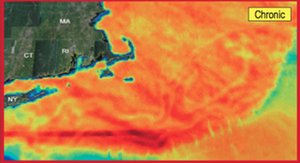 I’ve also been invited to participate in a small, invitation-only symposium being convened by NOAA (National Oceanic and Atmospheric Administration) and BOEM (Bureau of Ocean Energy and Management) to gather feedback on NOAA’s recent efforts to engage in ocean sound and cetacean distribution mapping, and to discuss ideas about how to use and develop these new tools to inform future ocean management decisions. As a long-time advocate of more concerted mapping of current human sound in the oceans, I’m especially excited to participate in this event. We’ll gather in DC for two days in late May. I got the good news on this invitation earlier this week while attending a BOEM workshop on the effects of noise on fish and invertebrates; I hope to post a brief summary of the proceedings later this week.
I’ve also been invited to participate in a small, invitation-only symposium being convened by NOAA (National Oceanic and Atmospheric Administration) and BOEM (Bureau of Ocean Energy and Management) to gather feedback on NOAA’s recent efforts to engage in ocean sound and cetacean distribution mapping, and to discuss ideas about how to use and develop these new tools to inform future ocean management decisions. As a long-time advocate of more concerted mapping of current human sound in the oceans, I’m especially excited to participate in this event. We’ll gather in DC for two days in late May. I got the good news on this invitation earlier this week while attending a BOEM workshop on the effects of noise on fish and invertebrates; I hope to post a brief summary of the proceedings later this week.
 “This one is actually a little different,” says Bigelow, “because you have this continuous noise and you have the wind changing, of course, but you have this continuous thumping and swishing, and that’s really irritating to people.” Bigelow notes that, “when you average it all out, wind turbines are going to be worse than traffic noise for annoyance, and that’s already been well established because of the character of it.”
“This one is actually a little different,” says Bigelow, “because you have this continuous noise and you have the wind changing, of course, but you have this continuous thumping and swishing, and that’s really irritating to people.” Bigelow notes that, “when you average it all out, wind turbines are going to be worse than traffic noise for annoyance, and that’s already been well established because of the character of it.”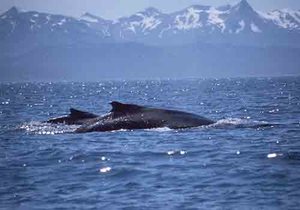 Two of the US’s most widely-respected ocean bioacousticians have called for a concerted research and public policy initiative to reduce ocean noise. Christopher Clark, senior scientist and director of Cornell’s Bioacoustics Research Program, and Brandon Southall, former director of NOAA’s Ocean Acoustics Program, recently published
Two of the US’s most widely-respected ocean bioacousticians have called for a concerted research and public policy initiative to reduce ocean noise. Christopher Clark, senior scientist and director of Cornell’s Bioacoustics Research Program, and Brandon Southall, former director of NOAA’s Ocean Acoustics Program, recently published 